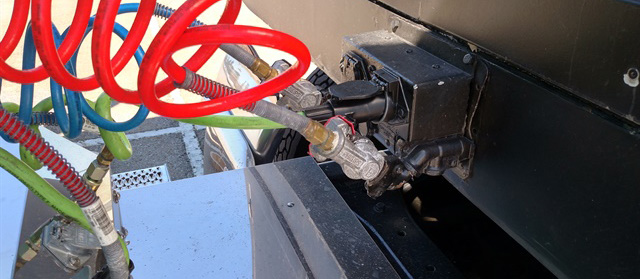
The Society of Automotive Engineers (SAE) is developing new standards for tractor-trailer hookups that tackle two contentious issues: interconnection that let the two units communicate, and the best way to electronically couple them to reduce driver injury.
According to a Freightwaves article, as the gaps between tractors and trailers shrink through aerodynamic design, making connections safer is only one concern for standards-writing engineers who must account for autonomous trucking in the near future.
“There is little consensus on a common connector system for the future,” said Dave Engelbert, chair of the SAE Truck and Bus Brake and Tractor-Trailer Interconnect group. “It is very political.”
“The amount of data is exploding and we need a system that can report back and forth,” said Wally Stegall, vice chairman of the future truck group of the Technology and Maintenance Council of the American Trucking Associations (ATA). Tire pressure monitoring systems, door sensors, solar panels, and wireless temperature sensors are just a few of the data sources.
Engelbert, Fry and Stegall spoke at the recent SAE COMVEC Technology Connection meeting in Indianapolis.
“Anytime you try to create standards, it’s hard to get everybody to agree,” said Mike Roeth, executive director of the North American Council for Freight Efficiency (NACFE). “But that’s not a reason not to do it.”
Compatibility counts
An SAE task force reviewing voltage systems used by North American heavy-duty truck manufacturers recommended in October 2018 that 12-volt direct current should be used with the interface governed by existing SAE standards. The task force said 24- or 48-volt DC connectors should be options based on demand.
With many truck makers pledging to offer high-voltage battery-electric trucks for sale early in the next decade, a new standard probably will be needed.
Truckers often are injured in slips, trips and falls when hooking or unhooking cables between tractor and trailer. As farings and other gap-closing technology become common to improve fuel efficiency, access to the space between the tractor and trailer is getting more difficult.
More immediately, the makers of gap-closing equipment need to consider the rise of drop-and-hook operations as dry van freight moves shorter distances and is pushed into hub-and-spoke distribution, Roeth said.
Full story here.
